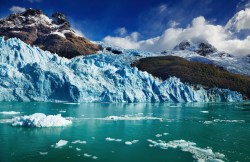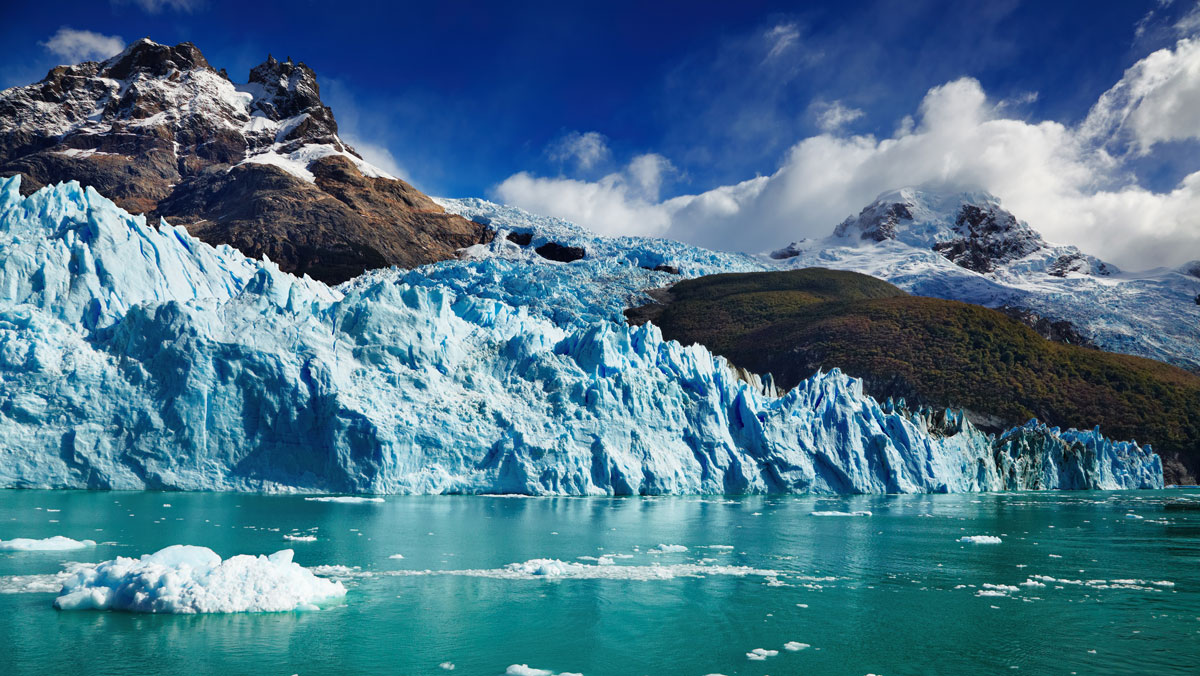
ShutterstockGlaciers, such as this one in Argentina, are melting and releasing their reserves of water.
Farewell, great lakes of ice and frozen rivers.
Scientists used satellite images and gravity measurements to peer more closely than ever before at the torturous drip-drip-drip from the world’s glaciers. What they discovered is not really much of a surprise: Ice Age glaciers have been methodically chiseled away by the warming effects of fossil fuel burning.
Global warming and black carbon are working fast: Glaciers outside of the Greenland and Antarctic ice sheets are collectively losing an estimated 571 trillion pounds worth of ice annually, the researchers reported in a paper published Thursday in the journal Science.
Glaciers? Icesheets? Potatoes, potatoes, you say. Here’s the difference: The world’s ice sheets cover vast swaths in Greenland and Antarctica. Meanwhile, glaciers are rivers and lakes of slow-moving ice. You can find them at high altitudes in alpine regions around the world, and you’ll find them in lower elevations (including on and around ice sheets) as you approach the poles.
Although these glaciers contain just 1 percent of land ice reserves, they contribute about as much to the rising seas as the melting ice sheets. The individual contributions of glaciers to the rising seas may be relatively small, but the cumulative impacts of their melts are substantial.
The researchers concluded that melting glaciers are causing the oceans to surge by 0.03 inches yearly, which works out to 30 percent of the total annual rise in recorded sea levels.
From a press release by NASA, which provided the data to the researchers from its Ice, Cloud, and Land Elevation Satellite (ICESat) and Gravity Recovery and Climate Experiment (GRACE):
Current estimates predict all the glaciers in the world contain enough water to raise sea level by as much as 24 inches (about 60 centimeters). In comparison, the entire Greenland ice sheet has the potential to contribute about 20 feet (about 6 meters) to sea level rise and the Antarctic ice sheet just less than 200 feet (about 60 meters).
“Because the global glacier ice mass is relatively small in comparison with the huge ice sheets covering Greenland and Antarctica, people tend to not worry about it,” said study co-author Tad Pfeffer, a glaciologist at the University of Colorado in Boulder. “But it’s like a little bucket with a huge hole in the bottom: it may not last for very long, just a century or two, but while there’s ice in those glaciers, it’s a major contributor to sea level rise.”
The largest glacial losses during the study period from 2003 to 2009 were recorded from Arctic Canada, Alaska, coastal Greenland, the southern Andes, and high-mountain Asia. That’s pretty much all the major glacial regions, the exception being in Antarctica, where loss was minor.
So, there’s some good news for Antarcticans: Glacial melt is not as bad there as everywhere else.



